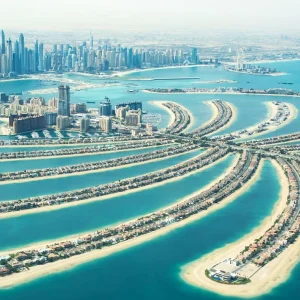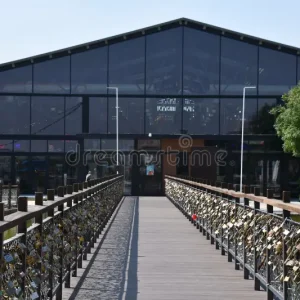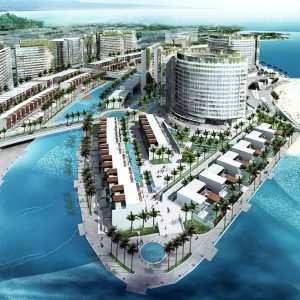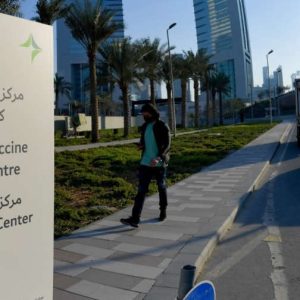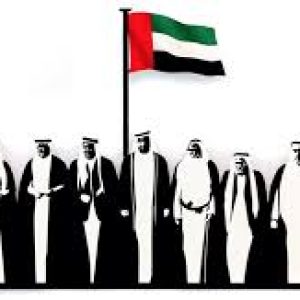Baniyas Road is one of Dubai’s most iconic and historically rich thoroughfares, weaving through the heart of the city’s evolution from a humble trading port to a global metropolis. Located along the shimmering waters of Dubai Creek, this road is more than a transport link—it’s a symbol of the emirate’s transformation. Over the decades, Baniyas Road has stood witness to Dubai’s journey, connecting old souks and trading hubs with the city’s new-age towers and business centers.
Walking or driving along Baniyas Road feels like stepping through time. On one side are traditional dhows, bustling spice markets, and the echoes of merchants calling out prices. On the other, you see sleek buildings, modern hotels, and a skyline that tells the story of ambition and innovation.
The Strategic Location of Baniyas Road
Stretching through the Deira area and running parallel to Dubai Creek, Baniyas Road holds immense importance in connecting some of the city’s most active commercial and cultural neighborhoods. It links the Deira Corniche, Al Sabkha, Al Rigga, and the Al Ras area—locations known for their vibrant trade and dynamic street life.

Its proximity to the Creek, one of Dubai’s oldest trading routes, adds to its charm. For decades, goods from around the world arrived at the dhow wharfage area along Baniyas Road before making their way into the city’s bustling souks. This connection between land and water helped establish Dubai’s early reputation as a global trading hub.
A Blend of Tradition and Modernity
Few places in Dubai reflect the balance between heritage and progress as beautifully as Baniyas Road. The street captures the essence of old Dubai, where gold, textiles, and spices filled the air with color and fragrance, while also showcasing the sleek evolution of modern city life.

The Baniyas Square area is home to traditional markets that attract both tourists and residents looking for authentic experiences. Yet, nearby you’ll also find modern office buildings, luxury hotels, and cafes that symbolize Dubai’s cosmopolitan growth. This seamless blend of old and new makes Baniyas Road a must-visit destination for anyone wanting to understand the city’s soul.
The Heart of Deira’s Trading Legacy
Deira, where Baniyas Road runs prominently, is the historic commercial heart of Dubai. For centuries, merchants from India, Iran, Africa, and the Arabian Peninsula have traded goods here. Baniyas Road became the main artery that supported this movement of trade, connecting markets like the Gold Souk, Spice Souk, and Textile Souk with the Dubai Creek docks.
Even today, you’ll find traders negotiating deals in the open air, shopkeepers arranging displays of gold jewelry, and tourists marveling at the timeless charm of these bustling lanes. The road continues to serve as a symbol of commerce, energy, and entrepreneurship.
Architectural Highlights and Landmarks
Baniyas Road is lined with several architectural and cultural landmarks that reflect Dubai’s evolution through the decades. Notable among them is the Dubai Chamber of Commerce and Industry building, one of the city’s earliest examples of sustainable modern architecture. Its unique curved façade and reflective design stand out along the Creek.
Other significant spots include Baniyas Square, a landmark roundabout and commercial hub that has long been a gathering point for locals and tourists. The area around the road also hosts numerous hotels such as the Radisson Blu Hotel Deira Creek, a property that has been part of Dubai’s hospitality story since the 1970s.
From mosques with intricate minarets to sleek towers offering waterfront views, the road showcases a fascinating mix of architectural eras that tell Dubai’s ever-evolving story.
The Role of Dubai Creek Along Baniyas Road
The Creek is inseparable from the identity of Baniyas Road. Historically, this natural inlet served as Dubai’s main commercial lifeline, where wooden dhows carried cargo between the Gulf, India, and East Africa. Baniyas Road’s location along this waterway gave it a strategic role in supporting trade, business, and transport.
Today, visitors can still see traditional dhows anchored along the wharfage area, blending the charm of the past with the energy of the present. Boat rides and Abra crossings across the Creek offer a different perspective of the city and highlight the enduring connection between the road and Dubai’s maritime legacy.
Transportation and Accessibility
Baniyas Road is not only a cultural landmark but also a major transport link. It connects easily to the rest of Dubai through the Dubai Metro, taxis, and public buses. The Baniyas Square Metro Station, located on the Green Line, provides quick access to nearby markets, hotels, and offices.
Its strategic placement makes it a preferred area for both residents and tourists who wish to explore the traditional side of Dubai without sacrificing modern conveniences. Whether you are heading toward the airport, Downtown Dubai, or the northern Emirates, Baniyas Road serves as a vital connector.
The Vibrant Street Life of Baniyas Road
One of the most distinctive features of Baniyas Road is its vibrant atmosphere. The sidewalks are always alive with activity—street vendors offering souvenirs, families strolling in the evenings, and tourists snapping photos of dhows gliding across the Creek.
Small cafeterias and local eateries serve authentic Arabic and South Asian cuisine, allowing visitors to experience the flavors that define Dubai’s diverse community. The aroma of freshly brewed Arabic coffee mingling with the scent of spices adds to the sensory charm of the area.
At night, the road transforms with lights reflecting on the water, creating a picture-perfect setting that captures the essence of Dubai’s timeless beauty.
Baniyas Road’s Role in Tourism
For tourists, Baniyas Road offers a glimpse into Dubai’s authentic roots. Many guided tours include this area because it allows visitors to experience both traditional souks and modern cityscapes in one walk. It’s a photographer’s paradise—every corner tells a story, from merchants loading goods on dhows to families shopping in age-old markets.
The Creekside hotels offer some of the best views of old Dubai, while nearby attractions such as the Dubai Museum, Al Fahidi Historical District, and Heritage Village make the area even more attractive to cultural explorers.
Economic and Commercial Significance
Baniyas Road remains an economic powerhouse for Dubai’s small and medium businesses. The numerous offices, shops, and trading outlets along the road represent a wide range of industries—from textiles and electronics to hospitality and logistics.
It also houses several money exchanges and shipping companies, serving both locals and expatriates who depend on the area’s convenient services. The road’s continued commercial vitality reflects Dubai’s resilience and entrepreneurial spirit, qualities that have defined its growth for decades.
Urban Renewal and Development Projects
In recent years, Baniyas Road has undergone major redevelopment and beautification efforts as part of Dubai’s broader urban renewal plans. Road expansions, improved pedestrian paths, and landscaped waterfronts have made the area more attractive and accessible.
These upgrades not only enhance the quality of life for residents but also preserve the area’s historic identity while preparing it for the future. Dubai Municipality has focused on ensuring that modernization does not erase the traditional character that makes Baniyas Road special.
Baniyas Road at the Crossroads of Culture
The cultural diversity along Baniyas Road is unmatched. It’s a melting pot where Emirati traditions meet influences from South Asia, Africa, and the Middle East. The mix of languages, cuisines, and lifestyles gives the area its unique cosmopolitan identity.
Cultural festivals and seasonal events often take place nearby, reflecting Dubai’s inclusive spirit. Whether it’s Ramadan decorations lighting up the streets or visitors exploring markets during winter, Baniyas Road always has something to offer.
The Human Side of Baniyas Road
Beyond the buildings and traffic, Baniyas Road is about people—the shopkeepers who’ve been there for generations, the families who gather on weekends, and the travelers who find their first glimpse of Dubai here. Each person adds a layer of warmth and story to this bustling street.
Many long-time residents describe Baniyas Road as a place of memories—a spot where old friends meet, where business dreams begin, and where Dubai’s hospitality truly shines. This human connection makes the road more than an urban landmark; it’s a living, breathing part of the city’s soul.
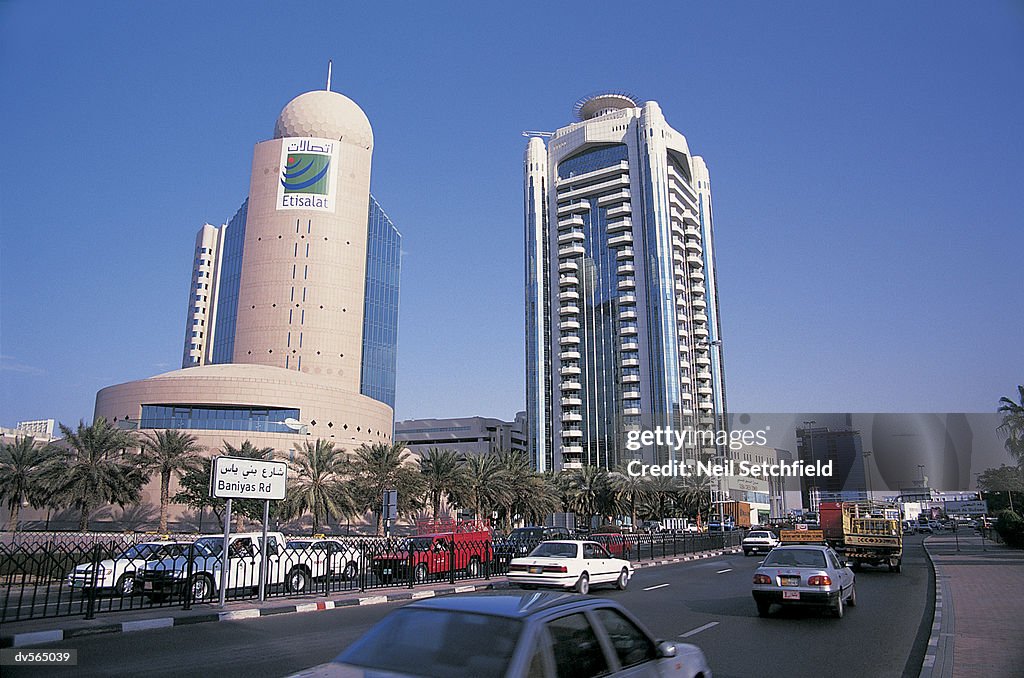
Preserving the Heritage of Baniyas Road
Preservation is key to maintaining Baniyas Road’s charm. Dubai’s authorities and cultural bodies have taken significant steps to conserve the architectural heritage of nearby areas like Al Ras and Deira while integrating modern facilities.
Restoration of heritage buildings and improvement of public spaces ensures that the road remains attractive for generations to come. This balance of preservation and progress embodies the essence of Dubai’s development model—respect for the past with a vision for the future.
Future Outlook for Baniyas Road
Looking ahead, Baniyas Road is set to remain a focal point of cultural tourism and economic activity. With ongoing projects such as the Deira Enrichment Project and Dubai Creek developments, the area is poised to gain renewed vibrancy.
Future plans emphasize walkability, public art, and sustainable design to enhance its appeal. These projects aim to ensure that Baniyas Road continues to play a central role in Dubai’s identity as both a modern global city and a proud guardian of its heritage.
Conclusion
Baniyas Road is more than just a street—it’s the heartbeat of Dubai’s history and progress. It reflects the city’s journey from a small trading settlement to a world-renowned destination. The road captures the essence of Dubai’s identity: resilience, openness, and a deep respect for culture.
Standing at the crossroads of tradition and innovation, Baniyas Road continues to connect people, businesses, and generations. It’s a reminder that in Dubai, every corner has a story, and every story leads toward a brighter, more connected future.
Do follow UAE Stories on Instagram
Read Next – Fujairah F3 Power Project Fully Operational: A Milestone in UAE’s Energy Future




